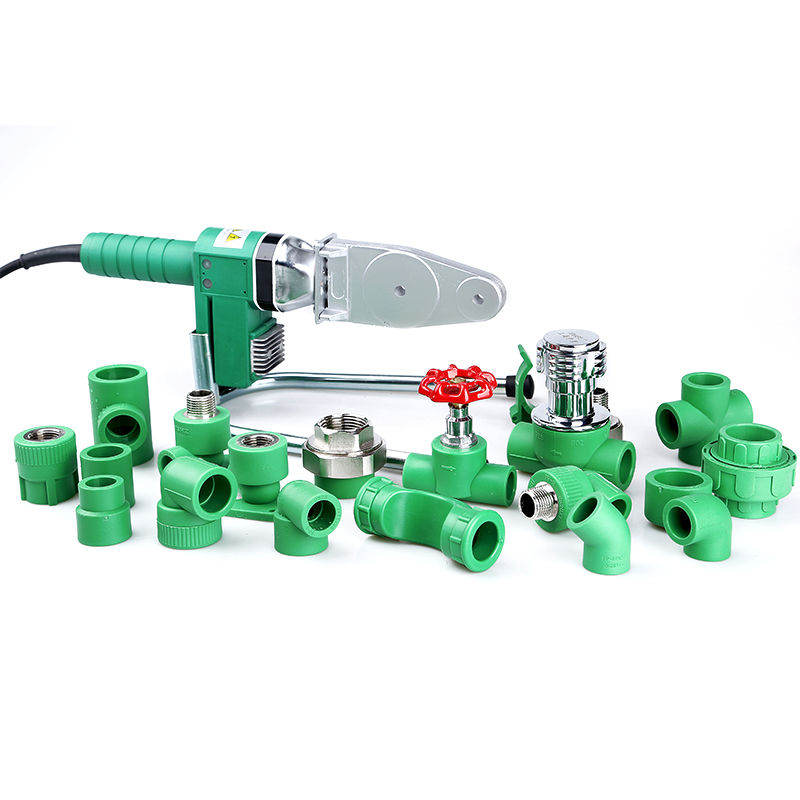Yes, PPR fittings have certain properties that help prevent the growth of bacteria and the buildup of scale, contributing to the cleanliness and hygiene of water systems.
While PPR fittings themselves do not inherently possess strong antibacterial properties, they are resistant to bacterial growth in a few key ways:
PPR fittings have a smooth inner surface that reduces the likelihood of sediment, debris, and microorganisms adhering to the pipe walls. This smoothness makes it harder for bacteria and algae to establish colonies inside the pipes compared to more porous materials like copper or galvanized steel, where biofilms can form more easily.
PPR is non-porous, meaning that it does not absorb water or support the growth of bacteria. This makes it harder for microorganisms to settle and proliferate within the piping system. In comparison, other materials such as concrete or certain metals may be more prone to harboring bacteria.
PPR fittings are highly resistant to corrosion, which helps in preventing rust and other forms of deterioration that can create environments where bacteria might thrive. In metals like steel, corrosion can provide a medium for bacteria to grow, but PPR’s resistance to corrosion keeps the system cleaner.
Scale buildup is primarily a concern in water systems with hard water (water that has high levels of calcium and magnesium). PPR fittings help in the prevention of scale for the following reasons:

The smooth and chemically resistant surface of PPR fittings minimizes the adhesion of minerals like calcium and magnesium. Unlike metal pipes, which are more likely to accumulate scale over time, PPR’s inert surface makes it less susceptible to mineral buildup.
PPR can withstand high temperatures without degrading, which helps maintain consistent water flow in hot water systems. This is especially important in preventing mineral precipitation caused by heating water. In hot water systems, scale tends to form more quickly in materials that react with high heat, but PPR’s resistance to heat minimizes this risk.
PPR does not leach metal ions into the water, which can react with minerals in hard water and contribute to scale formation. This is a common issue in systems made from copper or steel, where metal ions can promote the formation of scale.
PPR fittings are non-toxic and do not release harmful substances into the water. They comply with international health and safety standards, ensuring that drinking water transported through PPR pipes remains clean and hygienic.
Since PPR is not reactive with most substances, it does not contribute to water contamination or degradation. This characteristic makes it ideal for potable water systems, ensuring water quality remains high.
The long-term durability of PPR fittings contributes to their ability to maintain a clean water system over time. They do not degrade or break down in ways that might introduce contaminants into the water supply.
While traditional PPR fittings are not inherently antibacterial, there are now enhanced versions available in the market that incorporate antibacterial additives during manufacturing. These additives can help further prevent bacterial growth by reducing the potential for microbial proliferation inside the pipe.
PPR fittings are an excellent choice for ensuring the cleanliness and hygiene of water systems due to their smooth, non-porous, and corrosion-resistant properties. While they do not have strong intrinsic antibacterial properties, their ability to minimize scale buildup and bacterial growth is a key advantage, especially when compared to other piping materials. Enhanced versions of PPR pipes with antibacterial additives can provide even greater protection for water systems, particularly in areas where hygiene and water quality are of utmost concern.

 简体中文
简体中文 English
English русский
русский Español
Español Français
Français عربى
عربى Português
Português












